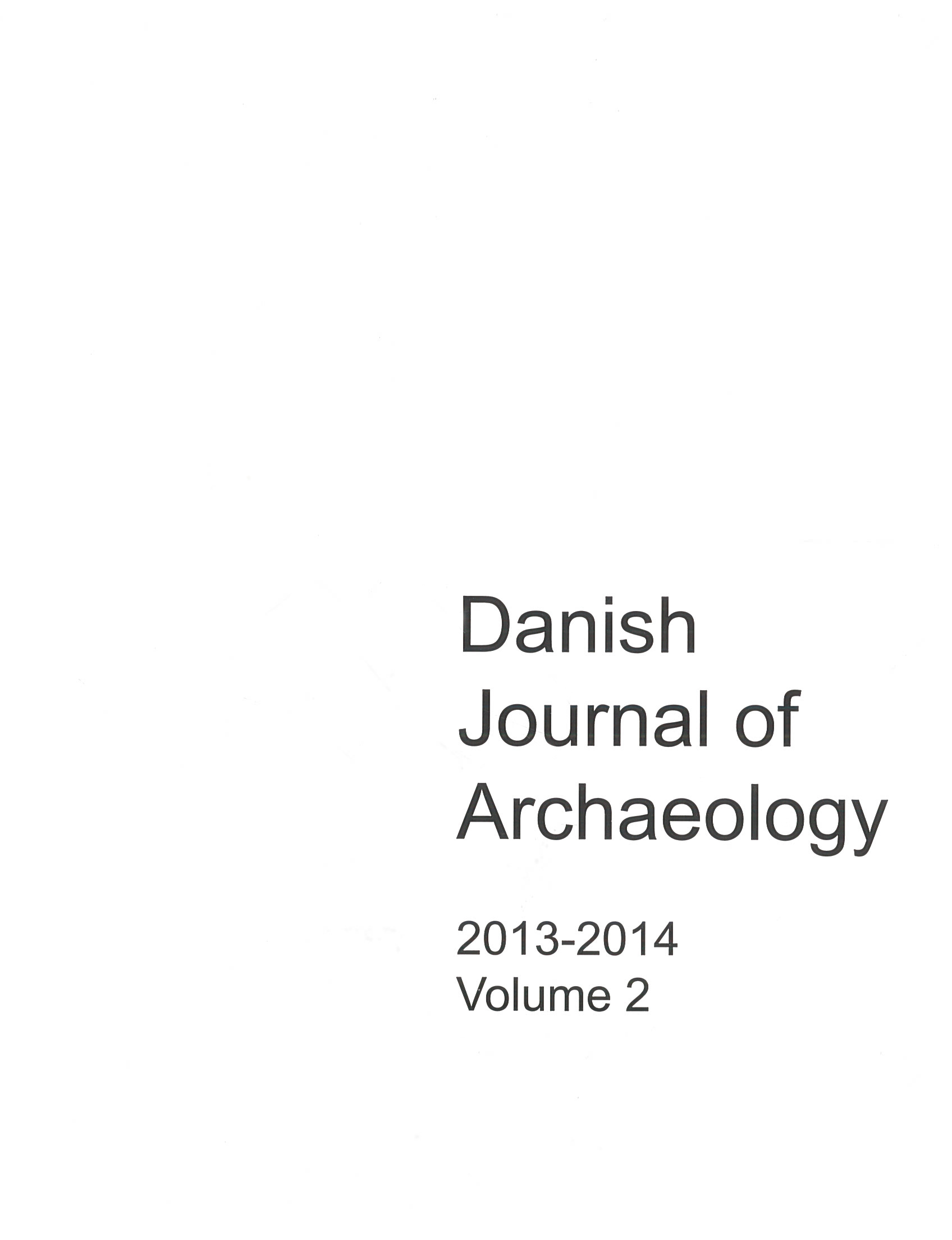New chronological research of the late Bronze Age in Scandinavia
DOI:
https://doi.org/10.1080/21662282.2013.904129Keywords:
Bronze Age, grave finds, correspondence analysis, chronologyAbstract
The concept of time dominating in archaeological science differs widely from that of prehistoric cultures. Still, ‘time’ is one of the most important criteria for the reception of cultural and historical processes. Compartmentalising time creates artificial breaches, used as methodical means of breaking down the continuum. This article analyses the currently valid chronological concept for the late Nordic Bronze Age created by Evert Baudou with the objective of finding possible toeholds for further subdivisions. Baudou’s generous conception of the time periods IV–V makes the realisation of chronological adjustments very difficult. Using Baudou’s catalogue of Danish grave finds, the author tries to further subdivide these time-horizons with the help of a correspondence analysis. By making use of several intermediate steps, it is possible to discern two more temporal subdivisions within the devolution of periods IV–V. The existence of these four phases is supported by 14C-dates.
References
AUD [Arkaeologiske udgravninger i Danmark]. 1998–2001. København: Det Arkaeologiske Naevn.
Baudou, E., 1960. Die regionale und chronologische Einteilung der jüngeren Bronzezeit im nordischen Kreis. Stockholm: Almqvist & Wiksell.
Bogacki, R.A., 1999. Zeit – ihre Auswirkungen auf menschliches Erleben und das Leben. Hamburg: Verlag Dr. Kovač.
Broholm, H.C., 1946. Danmarks bronzealder. 3 samlede fund fra den yngre bronzealder. København: Nyt Nordisk Verl.
Eggert, M.K.H., 2001. Prähistorische Archäologie. Tübingen: Franke UTB.
Hinz, M. and Müller, J. Forthcoming. The absolute speed of change: multidimensional scaling and innovation rates. Archaeometry.
Hölscher, L., 1999. Die Entdeckung der Zukunft. Frankfurt/M.: Fischer-Taschenbuch-Verlag.
Hornstrup, K.M., et al., 2012. A new absolute Danish Bronze Age chronology as based on radiocarbon dating of cremated bone samples from burials. Acta Archaeologica, 83, 9–53. https://doi.org/10.1111/j.1600-0390.2012.00513.x
Kneisel, J., 2012. Anthropomorphe Gefäße in Nord- und Mitteleuropa während der Bronze- und Eisenzeit. Studien zu den Gesichtsurnen – Kontaktzonen, Chronologie und sozialer Kontext. Bonn: Habelt.
Kneisel, J., Hinz, M., and Rinne, C., 2013. Radon-B [online]. Kiel. Available from: http://radon-b.ufg.uni-kiel.de/7.2.
Meller, H. eds., 2004. Der geschmiedete Himmel. Die weite Welt im Herzen Europas vor 3600 Jahren; [Begleitband zur Sonderausstellung, Landesmuseum für Vorgeschichte, Halle (Saale) vom 15 Oktober 2004 bis 24. April 2005, Dänisches Nationalmuseum, Kopenhagen, vom 1. Juli 2005 bis 22. Oktober 2005, Reiss-Engelhorn-Museen, Mannheim, vom 4. März 2006 bis 9. Juli 2006]. Darmstadt: Wiss. Buchges.
Nowotny, H., 1995. Wer bestimmt die Zeit? Zeitkonflikte in der technologischen Gesellschaft zwischen industrialisierter und individualisierter Zeit. In: K. Weis, ed. Was ist Zeit?. München: dtv Deutscher Taschenbuch Verlag, 81–99.
Olonetzky, N., 1997. Chronik von Chronos. Du – Zeitschrift für Kultur, 10, 1–24.
Olsen, J., et al., 2011. Chronology of the danish Bronze Age based on 14C dating of cremated bone remains. Radiocarbon, 53 (2), 261–275. https://doi.org/10.1017/S0033822200056538
Olson, I., 1961. C14 determinations. appendix I. In: B. Stjernqiust, ed. Simris II. Bronze Age problems in the light of the Simris excavation. Lund: Habelt, 154–156.
Petré, R., 1961. Ein bronzezeitlicher Grabhügel bei Nymölla, ksp. Ivetofta, Schonen. Meddelanden fran Lunds universitets historiska museum, Lund: 33–79.
Ramsey, C.B., 2009. Bayesian analysis of radiocarbon dates. Radiocarbon, 51 (1). 337–360. https://doi.org/10.1017/S0033822200033865
Sabatini, S., 2007. House urns. A european late Bronze Age trans-cultural phenomenon. Gothenburg: Göteborgs Univ., Inst. för Arkeologi och Antikens Kultur.
Stjernquist, B., 1961. Simris II: Bronze Age problems in the light of the simris excavation. Bonn: Habelt.
Tackenberg, K., 1961/63. Die nordischen Rasiermesser der jüngeren Bronzezeit in Nordwestdeutschland. Archaeologia Geographica, 10/11, 7–18.
Thrane, H., 1984. Lusehøj ved voldtofte – en sydvestfynsk storhøj fra yngre broncealder. Odense: Odense Bys Museer.
Trachsel, M., 2004. Untersuchungen zur relativen und absoluten Chronologie der Hallstattzeit. Bonn: Habelt.
Van Rossum, W., 2003. Welten hinter dem Horizont. Beitrag Deutschlandradio Berlin vom 12.7.2003.
Vandkilde, H., 1996. Radiocarbon dating and the chronology of Bronze Age southern scandinavia. Acta Archaeologica, 67, 183–198.
Weis, K., 1995. Zeitbild und Menschenbild: Der Mensch als Schöpfer und Opfer seiner Vorstellung von Zeit. In: K. Weis, ed. Was ist Zeit?. München: dtv Deutscher Taschenbuch Verlag, 23–52.
Downloads
Published
How to Cite
Issue
Section
License
Counting from volume 11 (2022), articles published in DJA are licensed under Attribution-NonCommercial-ShareAlike 4.0 International (CC BY-NC-SA 4.0). The editorial board may accept other Creative Commons licenses for individual articles, if required by funding bodies e.g. the European Research Council. With the publication of volume 11, authors retain copyright to their articles and give DJA the right to the first publication. The authors retain copyright to earlier versions of the articles, such as the submitted and the accepted manuscript.
Articles in volume 1-8 are not licensed under Creative Commons. In these volumes, all rights are reserved to DJA. This implies that readers can download, read, and link to the articles, but they cannot republish the articles. Authors can upload their articles in an institutional repository as a part of a green open access policy.
Articles in volume 9-10 are not licensed under Creative Commons. In these volumes, all rights are reserved to the authors of the articles respectively. This implies that readers can download, read, and link to the articles, but they cannot republish the articles. Authors can upload their articles in an institutional repository.





